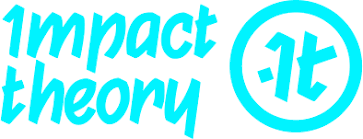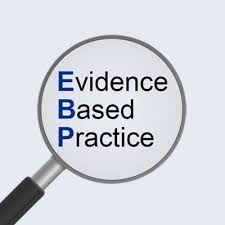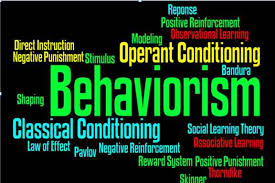
Critical Thinking and Social Impact Theory
Order Instructions:
Suppose that you have been working as a labor and delivery nurse at a hospital in an urban area for eight years. A colleague of yours, Mark (48 years old), is the Charge Nurse. Mark has been working at the hospital for the past four years, and he is your immediate supervisor. Outside of the work environment, you speak to Mark regularly on the telephone and the two of you are connected by a social networking website. Sam is a 17-year-old high school student who recently began working at the hospital as a volunteer to assist the phlebotomist in transporting blood samples to the laboratory. Sam has only been working at the hospital for two months. You, Mark, and Sam are dining in the employee cafeteria one afternoon along with four other hospital employees. A heated debate arises about how health care reform might affect your work environment in the near future. Some at the table feel that a letter should be written to an upper level hospital administrator to prevent any bad changes from occurring.
This is a three-part assignment.
First, explain Social Impact Theory in your own words (1 paragraph maximum).
According to Social Impact Theory:
- Would a letter eventually be written to the administrator?
- Which member of the group would most directly influence your way of thinking? Why?
- Why would the number of people participating in the conversation be relevant?
- How might media coverage of Health Care Reform shape the opinions of participants?
SAMPLE ANSWER
Critical Thinking and Social Impact Theory
The Social Impact Theory is a school of thought that is used in the prediction of social impact based on the different situations that can be considered. According to this theory, the magnitude of a social impact in any given situation depends on several parameters. These parameters are the parties involved, namely the sources of the influence as well as the group being targeted by the change. The second parameter of social impact is the social forces that come into play relevant to the situation at hand (Bhondeckar et al, 2013). This covers the potential of the source to influence, the urgency of the issue at hand and also the total number of sources working towards impact. The number of targets is inversely proportional to the effectiveness. An example of a social issue that can be explained through this scenario is the campaign against lengthy sentences for minor drug offences. The prime mover of such an action will be an individual or group of individuals who wish to see changes in the system. For them to have their voice heard and changes to be actually made, it is paramount that they convince more people to see things from their perspective and then join them. Their target also needs to be specific whether it is a politician or people who can influence a politician. Not carefully considering a strategy increases the chances of failure (Kwahck 2013).
Based on Social Impact Theory, a letter is bound to be written to the administrator. This is because all the parameters necessary for social impact are present in this given scenario. There is an issue at hand, the potential impact likely to be brought out by the healthcare reforms. The target of this potential social change will be to the administrator since the administrator has the capacity and authority to make the desired changes. There is also a sense of immediacy with the issue given that it brought up a heated debate (Thompson, 2013).
The member of the group who would most likely influence my way of thinking is Mark. This is because we know each other both within the work environment and outside. Furthermore, Mark is older than me and therefore has had a greater deal of exposure than myself. We get to discuss things with mark on different forums, the workplace, personally over the phone and also over social media. This means we have over time developed a lot in common and as such it is easier for my thoughts to be aligned to his. This may also be contributed to by the fact that our friendship with him will make us see things in the same way or look at the issue from a common perspective. A concept of consolidation with respect to social change theory states that individuals that regularly interact over time subconsciously end up having similar opinions as time progresses (Moynihan et al, 2013).
The number of people participating in the conversation would be relevant because it determines the number of sources and this has a direct effect on the power that the letter to the administrator would have. From the definition of the social impact theory, the number of sources is a main parameter. It will strengthen any campaign that will follow and this helps to amplify the message. If it is an idea that is promoted by few people, it will appear to be a personal issue or a subjective one that does not warrant changes to the entire system. A higher number of people participating will also be relevant in that it will embolden the participants in the conversation about the positions they hold. The larger the group means there are more consenting voices. This is necessary in eliminating or reducing the apprehension one may have if they feel they are made vulnerable by targeting the organization on their own. The concept of Social impact theory that arises in this regard is Clustering. Clustering is a phenomenon that leads people with similar points of view to gather in groups. The coming together of individuals in this group due to the similarity of their points of view and interest is a clear example of clustering (Dewall et al, 2010; Thompson, 2013).
Media Coverage of Health Care Reforms will shape the opinions of participants in several ways. First of all, it will make them aware about the actual healthcare reforms. Furthermore, the media coverage will analyze the dynamics of the reforms clearly illustrating who the stakeholders are and how they will be affected. The participants will get to understand where they are in the analysis and how they are likely to be affected. If the likely impacts will be favorable to them, they are likely to be supportive of the reforms. If the media focuses on the negative impacts likely to impact the participants, they are likely to take a position against it. The coverage of healthcare reforms by the media will also highlight issues such as the key decision makers and the degree of flexibility they have towards the matter. If the media shows them to be rigid and adamant about the proposed reforms, participants are bound to be more agitated and eager to express their views about the issue. On the contrary if the media reports in a manner that shows a relaxed attitude by the decision makers behind the health reforms, participants will not be less eager as they feel they have time. Divergent views are likely to come up in the event of media coverage. This is because the members of the group will consume the news independently (Hogg and Tindle, 2008).
References
Kwahk, K. Y., & Ge, X. (2012, January). The effects of social media on E-commerce: A perspective of social impact theory. In System Science (HICSS), 2012 45th Hawaii International Conference on (pp. 1814-1823). IEEE.
Bhondekar, A. P., Kaur, R., Kumar, R., Vig, R., & Kapur, P. (2011). A novel approach using Dynamic Social Impact Theory for optimization of impedance-Tongue (iTongue). Chemometrics and Intelligent Laboratory Systems, 109(1), 65-76.
Moynihan, D. P., Pandey, S. K., & Wright, B. E. (2012). Prosocial values and performance management theory: Linking perceived social impact and performance information use. Governance, 25(3), 463-483.
Thompson, J. B. (2013). Ideology and modern culture: Critical social theory in the era of mass communication. John Wiley & Sons.
DeWall, C. N., Twenge, J. M., Bushman, B. J., Im, C., & Williams, K. D. (2010). Acceptance by one differs from acceptance by none: Applying social impact theory to the rejection-aggression link. Social Psychological and Personality Science, 1(2), 168-174.
Hogg, M. A., & Tindale, S. (Eds.). (2008). Blackwell handbook of social psychology: Group processes. John Wiley & Sons.
We can write this or a similar paper for you! Simply fill the order form!












